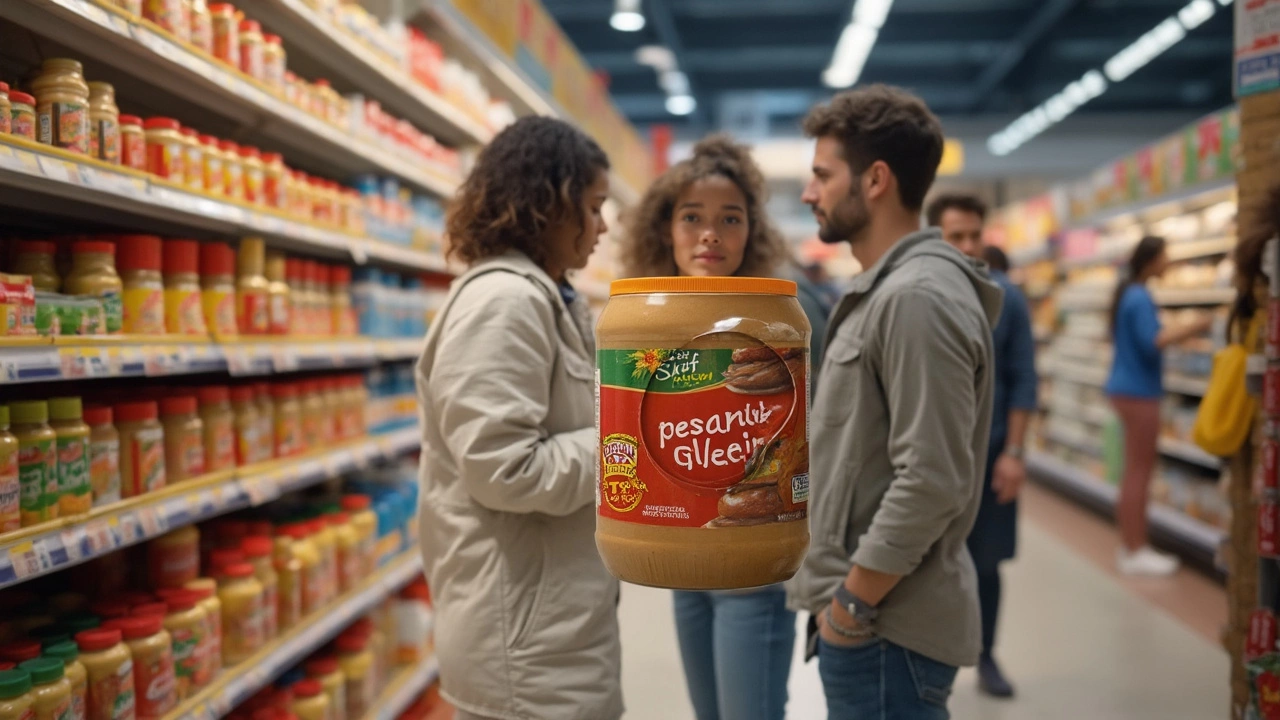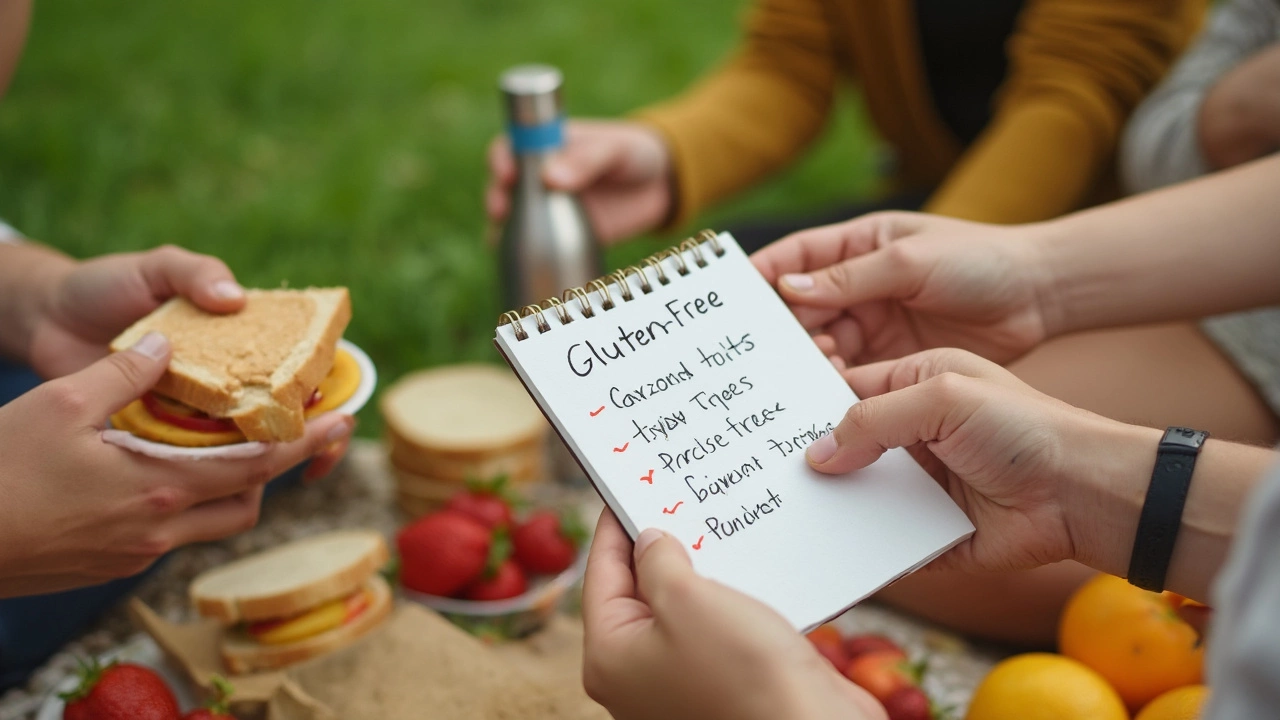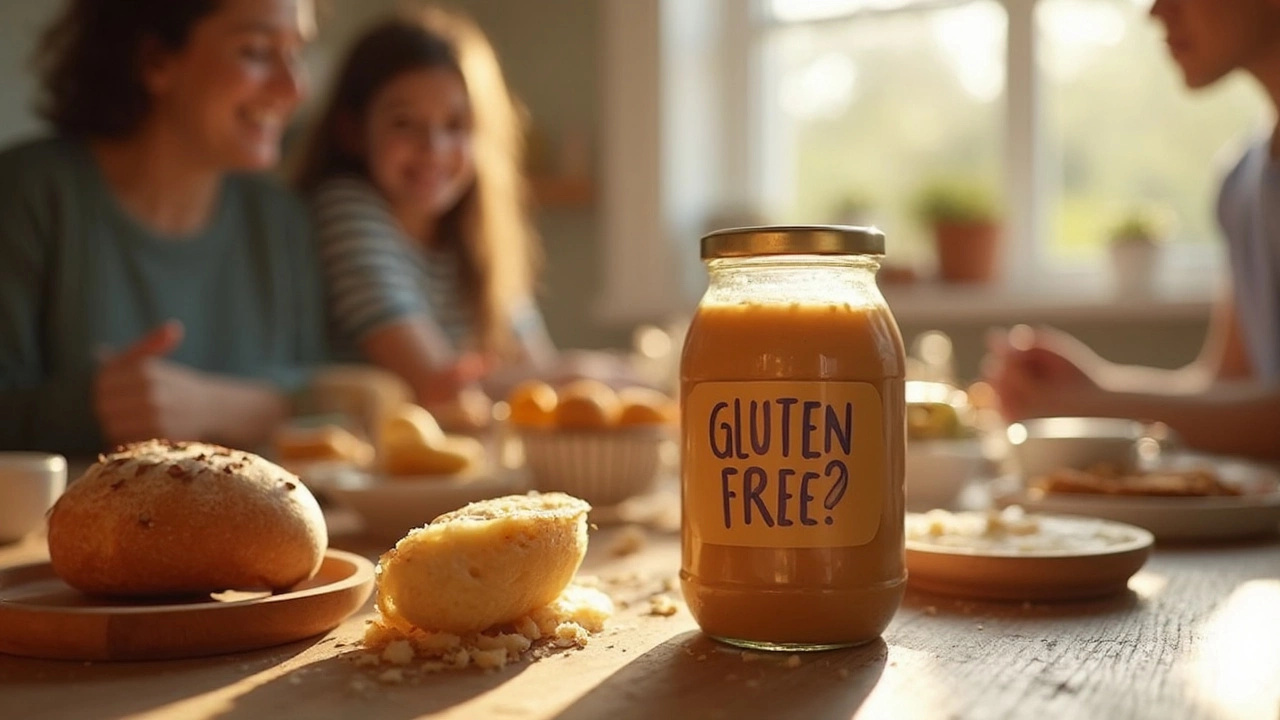If you’re living gluten free, every trip to the pantry can feel like a guessing game. Peanut butter is one of those foods you might double-check, especially if you’re new to celiac or have a gluten-sensitive kid like mine (Quentin will eat it straight off the spoon). The big question: does peanut butter have gluten?
The short answer: most plain, natural peanut butter is gluten free. Peanuts, after all, grow underground—they’re not related to wheat, barley, or rye. Companies usually just grind up peanuts, maybe throw in some salt or oil, and call it a day. But here’s where things get tricky: not all peanut butter gets made the same way, and some brands sneak in extra ingredients you wouldn’t expect.
- Is Peanut Butter Gluten Free?
- What Ingredients Could Add Gluten?
- Popular Brands and Hidden Risks
- Tips for Choosing Gluten Free Peanut Butter
- Cross-Contamination: Staying Safe
Is Peanut Butter Gluten Free?
First things first, peanut butter is made from—you guessed it—peanuts. Peanuts themselves don’t have gluten. They’re naturally gluten free, and so is the process of making plain peanut butter: you roast the peanuts, grind them up, and maybe add a bit of salt. That’s it. Simple, right?
Here’s the kicker, though. As soon as you get into the world of brands and different jars on supermarket shelves, things aren’t always as clear. Some peanut butters, especially the kind with extra flavors or mix-ins, can sneak in ingredients like wheat flour, maltodextrin (sometimes made from wheat), or even thickeners that are not gluten free.
According to the Celiac Disease Foundation, "Peanuts and peanut butter are naturally gluten-free, but it’s essential to read product labels to ensure no gluten-containing ingredients have been added during processing."
"Most plain peanut butters are safe for a gluten-free diet, but always check the label—companies can change ingredients without warning." – Celiac Disease Foundation
If you’re grabbing a jar of plain, natural peanut butter—think ingredients like peanuts, salt, maybe a dash of oil—you’re usually good. Store-brand or popular natural options like Smucker’s Natural or Adams list only peanuts and salt, making them naturally gluten-free. But it’s a different story with big brands that add sugar, palm oil, or dare I say, cookies for a swirl version.
To keep it super clear, here’s a quick breakdown of what to look for on the label if you need gluten free peanut butter:
- Check the ingredient list for wheat, barley, or rye (or any derivatives).
- Look for a certified gluten free label if you’re highly sensitive—some brands now stamp this right on the front.
- Flavor-packed versions (like honey, chocolate, or cookie swirl) can have unexpected gluten.
Data from a 2024 consumer test showed that over 90% of natural, one-ingredient peanut butters were gluten free, while 22% of flavored varieties contained either wheat or traces of gluten due to mix-ins. So, plain is your safest bet.
Remember, the easy answer is: peanuts and plain peanut butter have zero gluten. It’s the extra stuff you have to watch for.
What Ingredients Could Add Gluten?
On the surface, peanut butter should just be peanuts and perhaps a bit of salt. But if you take a closer look at the ingredients list, you’ll sometimes spot extra stuff mixed in. That’s where things can take a turn for folks who need to avoid gluten. Certain additives or flavorings sometimes contain gluten, and that’s what you want to watch out for.
Here’s what can sneak gluten into peanut butter:
- Thickeners or Stabilizers: Some brands use wheat-based thickeners to make the spread creamy and prevent oil separation. If you see "wheat starch" or "hydrolyzed wheat protein," skip it.
- Added Flavors: Peanut butters with “honey,” “maple,” or “chocolate” on the label often add extra flavors. These can sometimes include malt (made from barley), which is a no-go for a gluten free diet.
- Sweeteners: While sugar is safe, some companies toss in malt extract for extra taste, and that’s a source of gluten.
- Cross-Contact Ingredients: Sometimes, products use oats or cookie bits as add-ins, and unless those oats are certified gluten free, there’s a risk. Same goes for special flavors like pretzel swirl.
A simple rule: the fewer the ingredients, the safer you are. Natural or organic peanut butter with just peanuts and salt is almost always safe. Flavored, low-fat, or “fun” spreads? Check twice, because gluten can be hiding there.
| Ingredient | Possible Source of Gluten? |
|---|---|
| Peanuts | No |
| Salt | No |
| Hydrolyzed wheat protein | Yes |
| Malt extract | Yes |
| Oats (not certified GF) | Yes |
Always scan the label for words like “wheat,” “barley,” or “malt.” If you see them, that jar’s not for you. Trust your label-reading skills—they’re your best friend when picking safe gluten free options for your family.

Popular Brands and Hidden Risks
Walking down the peanut butter aisle, you’ll spot lots of big names—Jif, Skippy, Smucker’s, Reese’s, and plenty of store brands. Most of these classic creamy and crunchy jars are made without gluten ingredients. But here’s the thing: not every peanut butter is automatically safe.
You want to scan the label for sneaky stuff. Some brands add wheat-based thickeners or flavorings to their "fun" flavors like cookies & cream or s’mores. Even regular peanut butter, if made on shared equipment, runs a cross-contamination risk. For folks dealing with celiac or a true gluten allergy, that matters.
Here’s a quick rundown of popular brands and what they say about gluten:
- Jif: Most Jif peanut butters (original, natural, and the creamy stuff) are considered gluten free per the company—just avoid anything cookie or pretzel flavored.
- Skippy: This brand says their standard peanut butters contain no gluten ingredients, but they don’t test for cross-contact. Their natural lines are usually a safe bet.
- Smucker’s: Their classic peanut butter is gluten free. As for the fancy flavors, double-check every ingredient list.
- Reese’s: The regular Reese’s spreads are labeled gluten free, but seasonal or special flavors can change, so don’t skip the label check.
- Store brands: Some store labels, like Walmart’s Great Value or Target’s Good & Gather, state gluten free on plain peanut butter only. Flavored or swirled peanut butters can be a totally different story.
Check out this table for a quick snapshot (as of early 2025):
| Brand | Plain Varieties Gluten Free? | Flavored or Mix-In Varieties |
|---|---|---|
| Jif | Yes (most) | Check label; avoid cookie flavors |
| Skippy | Yes | Scan ingredient list |
| Smucker’s | Yes | Double-check special blends |
| Reese’s | Yes | Varies by flavor/season |
| Great Value (Walmart) | Yes | Look for gluten free label |
The fastest way to stay safe? Look for a certified "gluten free" seal, and if you see anything like "may contain wheat" on the label, put it back on the shelf. When in doubt, a quick call or email to the company’s support line can clear things up. No need to risk your health—or your Saturday sandwich—over an overlooked ingredient.
Tips for Choosing Gluten Free Peanut Butter
When you’re in the grocery aisle, wading through rows of jars, spotting gluten free peanut butter can be easier than you think—if you know what to look for. The simplest bet? Go for natural or "just peanuts" types. These usually have only one or two ingredients: peanuts, and maybe a dash of salt. Those are safe for anyone trying to dodge gluten.
If a brand lists anything extra—like "wheat starch," "maltodextrin," or even "flavoring"—pause and check the label. The big companies sometimes sneak in stabilizers or thickeners that can come from wheat. Thankfully, most labels in the U.S. stamp "Gluten Free" right on the jar if they’re safe. If you see that, you’re good to go.
- Always scan the ingredient list first. Look for a simple list like “peanuts” or “peanuts, salt.”
- Look for a certified gluten free logo on the front—the celiac community trusts seals from GFCO or Beyond Celiac.
- If you see words like “wheat,” “barley,” or “rye,” skip that jar.
- Double-check if the brand is made in a "shared facility" with wheat or other gluten products. There's a tiny risk for cross-contact in those cases.
- When in doubt, visit the brand’s website. Big names like Jif, Skippy, and Justin’s are open about their gluten free status online and update their allergen info regularly.
Here’s a quick comparison of common brands and their stated gluten policies:
| Brand | Gluten Free? | Notes |
|---|---|---|
| Jif | Most flavors | Some cross-contamination risk—plain is safest |
| Skippy | Yes (Plain & Natural lines) | Clearly marked gluten free, but always double-check labels |
| Justin’s | Yes (Classic, Honey) | Certified gluten free on natural varieties |
| Peter Pan | Most flavors | Labels allergy warnings if processed with wheat |
Bottom line: stick to natural peanut butter with a “gluten free” label, keep an eye out for allergy disclaimers, and never be shy about checking websites or calling brands if you’re still unsure. It’s way better than dealing with a reaction later, especially if you’ve got a curious kid reaching for the jar!

Cross-Contamination: Staying Safe
Cross-contamination is the sneaky way gluten slips into otherwise safe foods. Even though basic peanut butter doesn’t have gluten, it can pick it up if it’s made or handled near gluten-filled foods. Toss in a shared knife between regular bread and the peanut butter jar, and now the jar’s tainted. That’s all it takes.
Major brands usually make gluten free peanut butter in big factories, where other wheat-based products might be churned out a few feet away. Some brands, like Jif or Skippy, say their peanut butter doesn’t contain gluten, but they won’t promise zero cross-contamination unless the jar is labeled “certified gluten free.” That label means every batch gets tested and meets strict levels for celiac safety (less than 20 parts per million of gluten, according to the FDA).
- Always check labels for “certified gluten free.” That’s your safest bet, especially if you or your kids have celiac or serious gluten sensitivity.
- Buy separate jars if one person in the family eats gluten bread and another doesn’t. Quentin even draws a happy face on his safe jar, so there’s no mix-up.
- Never double-dip a knife that’s touched gluten foods (bread, crackers, you name it) back into the peanut butter.
- Wash hands before grabbing a scoop—gluten can transfer from tiny crumbs you don’t even see.
Curious how risky cross-contamination is in everyday kitchens? Here’s a look at how easy it can happen:
| Kitchen Habit | Risk of Gluten Transfer |
|---|---|
| Double-dipping with used knife | Very High |
| Using a clean spoon every time | Very Low |
| Shared peanut butter in a mixed-diet family | Moderate to High |
| Buying certified gluten free only | Lowest |
Bottom line: peanut butter is pretty safe, but cross-contamination is the wildcard. Make a couple of these habits automatic, and you don’t need to stress about gluten creeping into your toast or lunchbox PB&Js.

